When creating a luxurious, comfortable garden, nothing compares to the beauty and practicality of a natural shade. Trees add visual appeal to your outdoor space and serve a vital purpose by providing shade, reducing temperatures, and enhancing the overall ambiance of your garden. If you’re looking to craft a private, serene outdoor area that is cool and inviting, carefully selected shade trees are essential. This guide will explore how to choose and plant trees to offer natural shade, focusing on three standout species: Quercus palustris (Pin Oak), Acer negundo 'Sensation', and Waterhousea floribunda. Each of these trees offers unique benefits and can be used to create a refined, shaded area for your beautiful and functional garden.
Why Use Trees for Natural Shade?
Trees are a timeless choice for garden shading, especially in high-end landscapes where aesthetics and functionality are key. Natural shade can cool outdoor areas by several degrees, creating a refreshing retreat during warmer months. Additionally, trees offer long-term environmental benefits, such as improved air quality and habitat creation. When strategically placed, they also enhance the architectural design of your garden by framing spaces and offering privacy.
The Key Benefits of Natural Shade from Trees:
- Temperature Regulation: Trees act as natural air conditioners, reducing surrounding temperatures and making outdoor areas more comfortable.
- Energy Efficiency: Well-placed trees can reduce the need for artificial cooling systems, lowering energy costs.
- Environmental Impact: By absorbing carbon dioxide and releasing oxygen, trees contribute to a healthier environment.
- Visual Appeal: Trees can dramatically enhance the aesthetic value of your garden, creating a sense of tranquility and elegance.
Now, let's examine three popular trees that can bring natural shade to your outdoor space.
Quercus palustris (Pin Oak)
Quercus palustris, commonly known as Pin Oak, is a striking deciduous tree with excellent shade and vibrant seasonal color. With its graceful, pyramidal form and lush green leaves, the Pin Oak is ideal for larger gardens seeking a commanding focal point. In autumn, its foliage turns a brilliant red, adding dynamic visual interest. Pin Oaks grow tall and wide, providing ample shade for large outdoor areas, making them perfect for shading patios, outdoor lounges, or children’s play areas.
Key Facts:
- Mature Height: 15–25 meters
- Mature Width: 10–15 meters
- Best Uses: Feature tree, shade tree, large garden settings
- Leaf Appearance: Glossy green in summer, turning vivid red in autumn
- Rate of Growth: Moderate to fast
- Tolerates: Wet soils, urban conditions, clay soils

Why It’s Perfect for Your Garden:
If you’re looking for a shade tree that makes a statement, Quercus Palustris is an excellent option. Its large canopy offers cooling shade, which is ideal for entertaining outdoors or simply lounging in the garden. Despite its size, this tree is relatively low-maintenance, requiring only occasional pruning. The Pin Oak thrives in urban and suburban environments and adapts well to various soil conditions, making it a versatile option for luxury gardens. Its year-round appeal ensures that your garden looks beautiful every season, from the vibrant greens of summer to the fiery reds of autumn.
Acer negundo 'Sensation'
Acer negundo 'Sensation' is a striking variety of Box Elder that delivers a powerful combination of beauty and functionality. Known for its vibrant red and orange foliage in autumn, this deciduous tree is perfect for homeowners seeking a mid-sized tree that provides ample shade and aesthetic appeal. 'Sensation' is well-suited for gardens requiring a pop of color while delivering practical shade to smaller areas, such as courtyards, poolside retreats, or intimate garden nooks.
Key Facts:
- Mature Height: 7–10 meters
- Mature Width: 5–7 meters
- Best Uses: Shade trees, small to medium gardens, feature tree
- Leaf Appearance: Light green in spring and summer, transforming to shades of red and orange in autumn
- Rate of Growth: Moderate
- Tolerates: Windy conditions, urban environments

Why It’s Perfect for Your Garden:
The Acer negundo 'Sensation' is ideal for those looking to balance beauty with functionality in a garden space. Its size is perfect for medium-sized outdoor areas, where its spreading canopy provides excellent shade without overwhelming the garden's design. The autumnal color display adds seasonal interest, ensuring your garden feels vibrant and dynamic throughout the year. This cultivar is a standout choice for affluent homeowners seeking an easy-to-maintain tree that thrives in most climates. Its ability to withstand urban conditions makes it a fantastic addition to city gardens or more exposed spaces prone to wind.
Waterhousea floribunda
If you’re aiming for a lush, green space with dense shade and a tropical vibe, Waterhousea Floribunda is the tree to choose. Commonly known as Weeping Lilly Pilly, this evergreen tree is known for its glossy green leaves, elegant weeping form, and ability to provide dense, year-round shade. It’s a perfect addition to gardens where privacy and shading are priorities, such as along property lines or beside outdoor seating areas. The tree’s cascading branches create a beautiful, natural canopy that gives your garden a sense of seclusion and tranquility.
Key Facts:
- Mature Height: 8–15 meters
- Mature Width: 5–7 meters
- Best Uses: Screening tree, shade tree, privacy hedge, tropical garden
- Leaf Appearance: Dark green, glossy leaves with a weeping form
- Rate of Growth: Fast
- Tolerates: Full sun, light frost, coastal conditions

Why It’s Perfect for Your Garden:
Waterhousea Floribunda is the ultimate choice for creating a private, shaded garden retreat. Its fast growth and dense foliage make it highly effective for blocking harsh sunlight and providing cool, shaded areas throughout the year. The weeping branches add a sense of elegance and flow, perfect for gardens with a tropical or relaxed aesthetic. This tree also works beautifully in coastal gardens or areas with mild frost, offering flexibility in various climates. With minimal pruning and care, Waterhousea floribunda is an efficient and reliable choice for homeowners seeking lush, natural shade.
Planting Tips for Natural Shade Trees
Careful planning is essential to maximize their benefits when selecting and planting shade trees. Follow these key steps to ensure that your trees grow healthily and provide optimal shade:
- Choose the Right Location: Plant trees that will provide the most shade during peak sunlight hours, typically on the southern hemisphere's northern or western side of the garden.
- Consider the Tree’s Mature Size: Always account for its mature height and width to ensure it fits well within the space and doesn’t overcrowd other plants or structures.
- Prepare the Soil: Well-draining soil is essential for most shade trees. Amend compacted or clay soils with organic matter to improve drainage and root health.
- Watering and Maintenance: Newly planted trees need regular watering, particularly during the first year, as they establish their root systems. Once established, most shade trees are drought-tolerant but will benefit from occasional deep watering during hot spells.
FAQs
-
How long does it take for shade trees to mature?
Shade trees like Quercus palustris and Waterhousea floribunda can take several years to mature, but their growth rate varies. Fast-growing species like Waterhousea floribunda can provide shade within a few years, while others may take longer. -
Can shade trees be used in small gardens?
Trees like Acer negundo 'Sensation' are perfect for small—to medium-sized gardens. They offer ample shade without overpowering the space. -
Do shade trees require a lot of maintenance?
Most shade trees, including Quercus palustris, are relatively low-maintenance. Occasional pruning and watering in the first few years are essential for healthy growth but require minimal care once established.
Creating natural shade in your garden adds comfort and elevates its visual appeal and functionality. By selecting trees like Quercus palustris, Acer negundo 'Sensation', and Waterhousea floribunda, you can craft a luxurious, shaded retreat that enhances your outdoor space's beauty and utility. With the right care and planning, these trees will thrive, providing shade and elegance for years.


















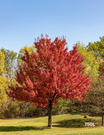

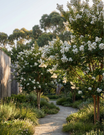



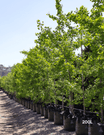


















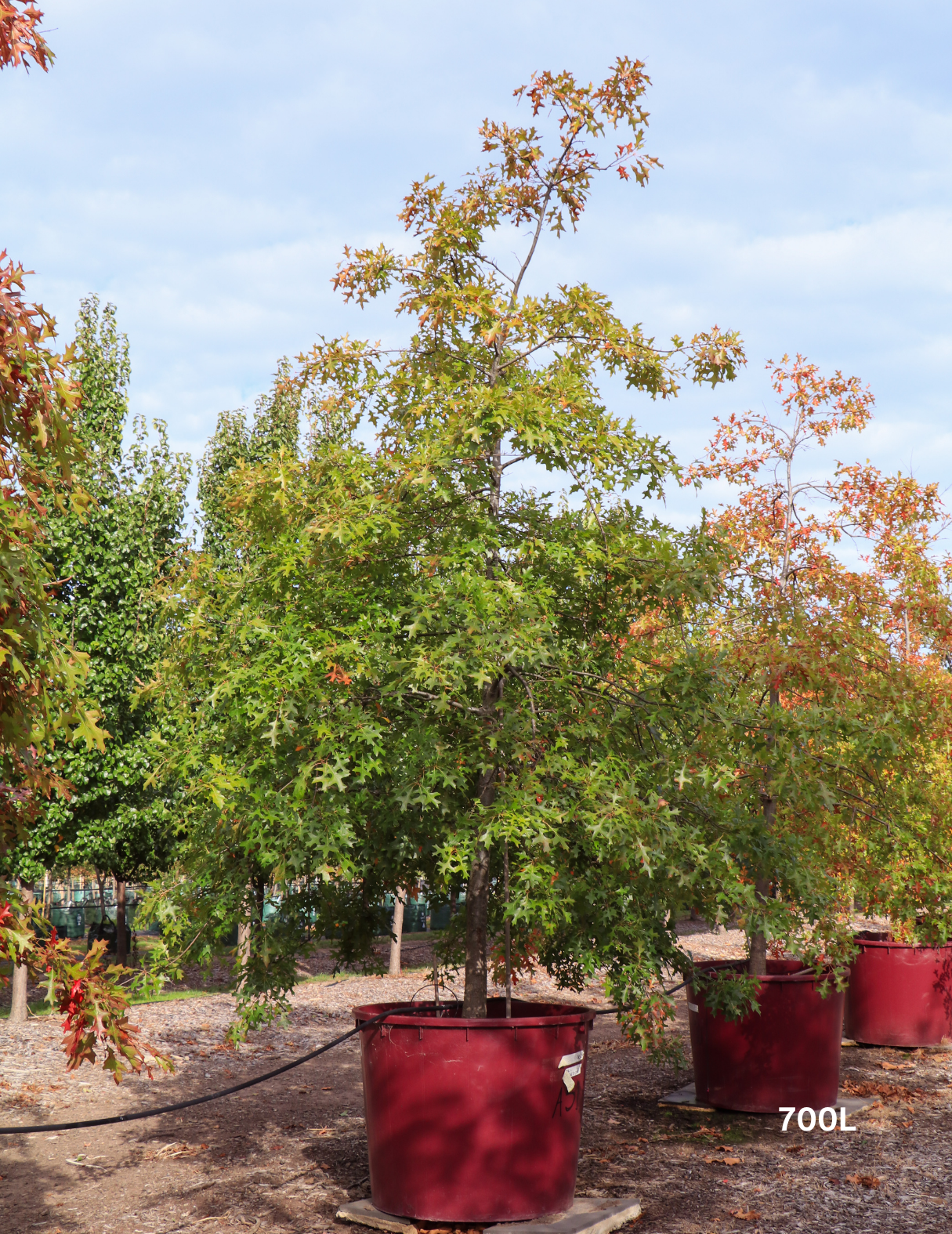

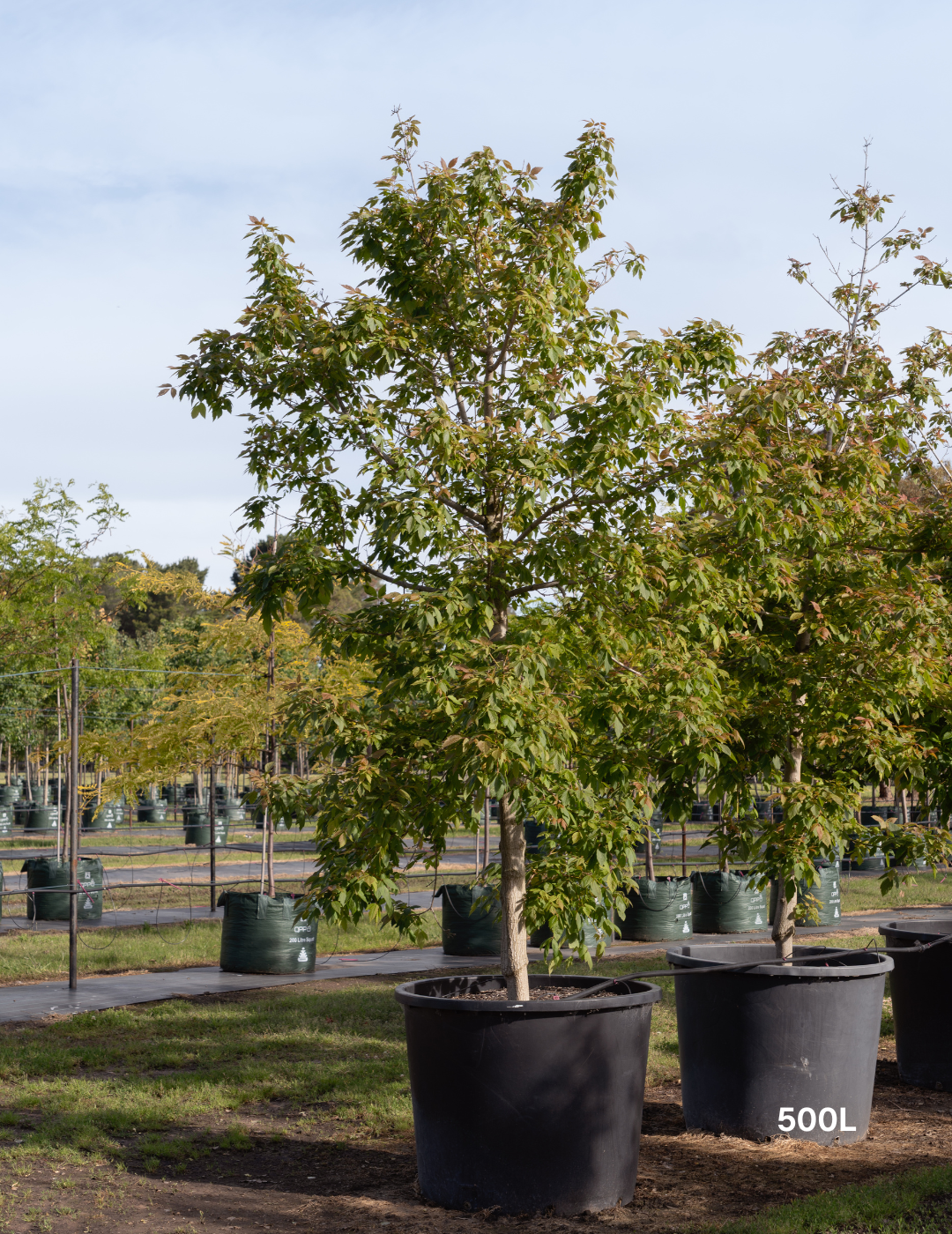



Leave a comment
This site is protected by hCaptcha and the hCaptcha Privacy Policy and Terms of Service apply.